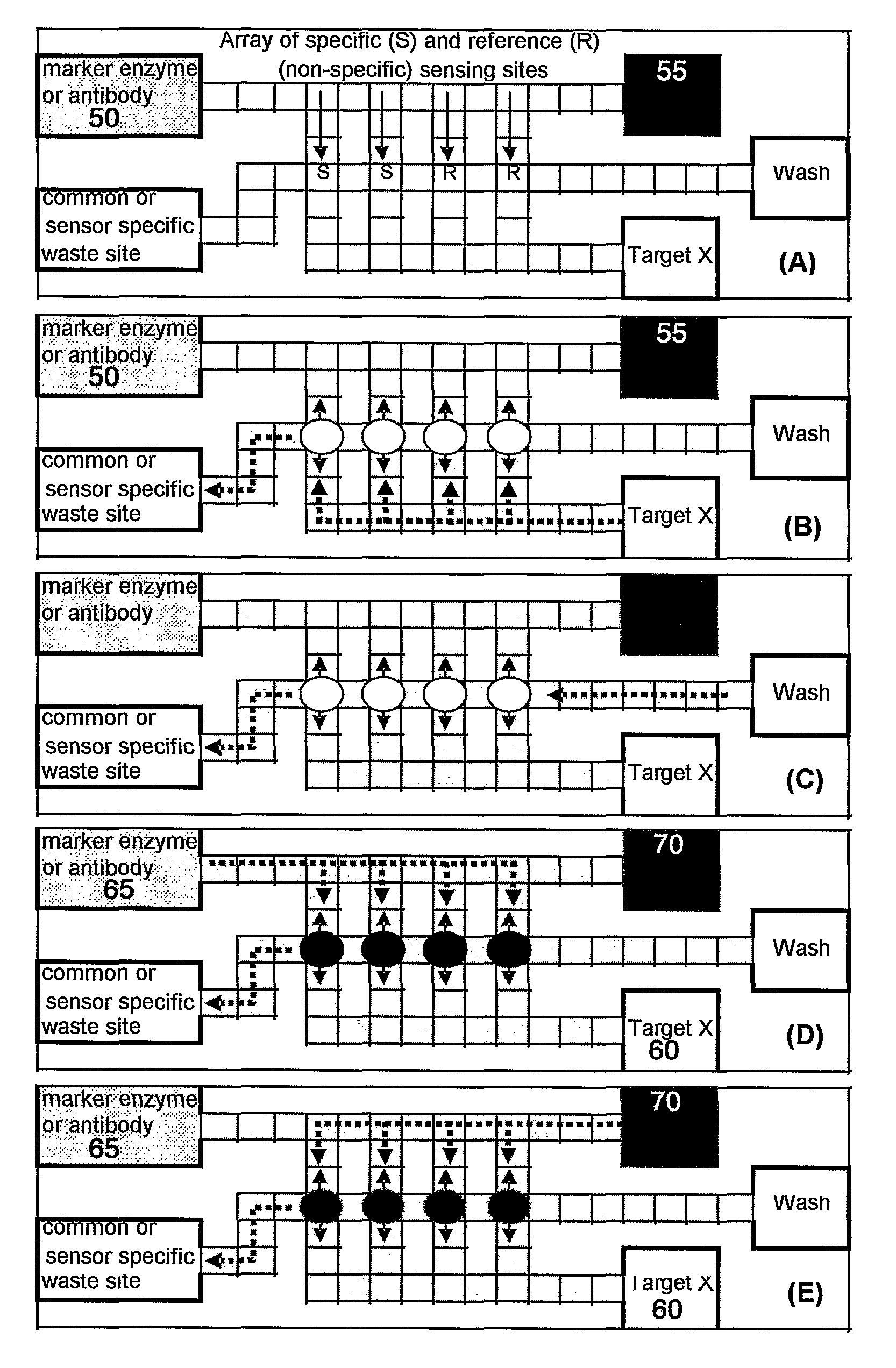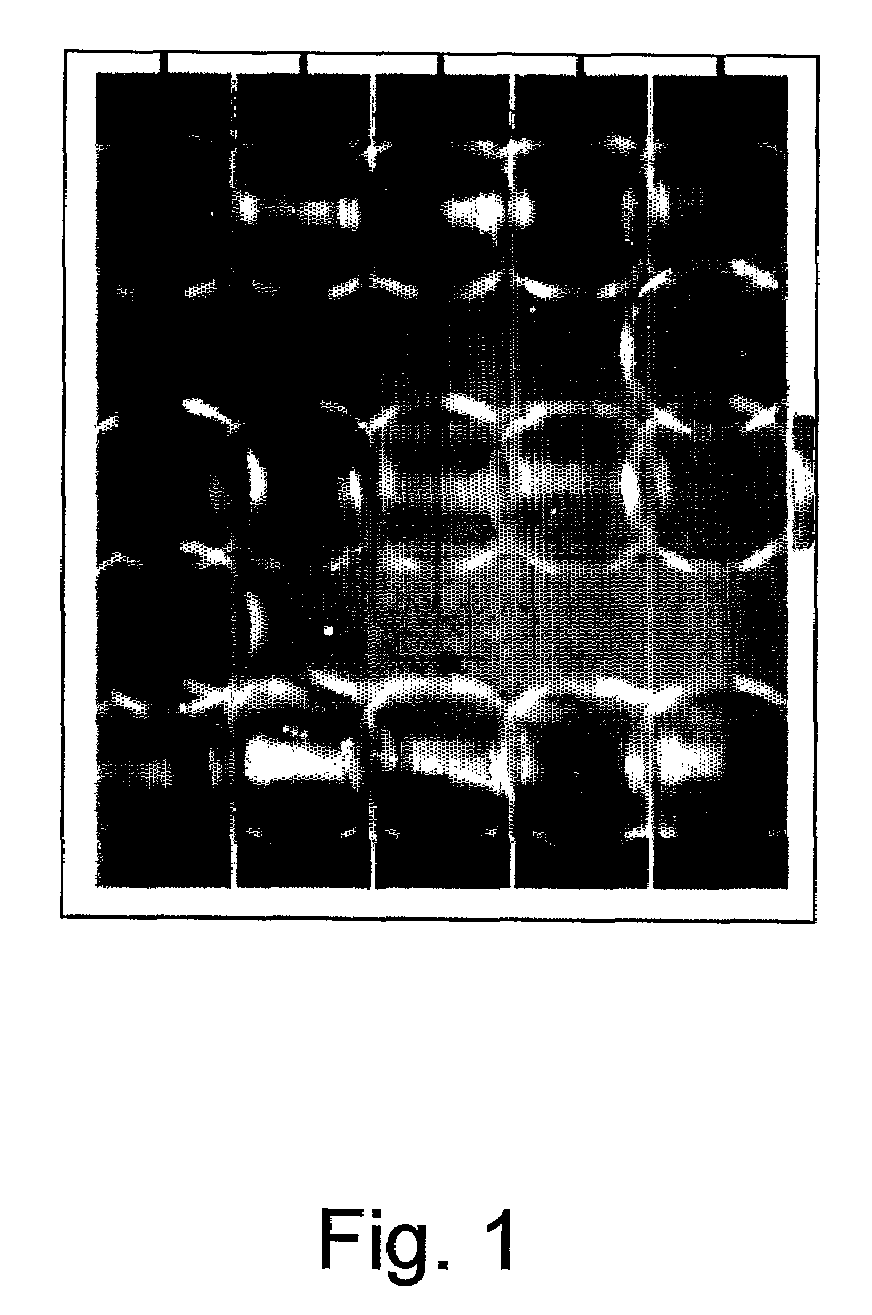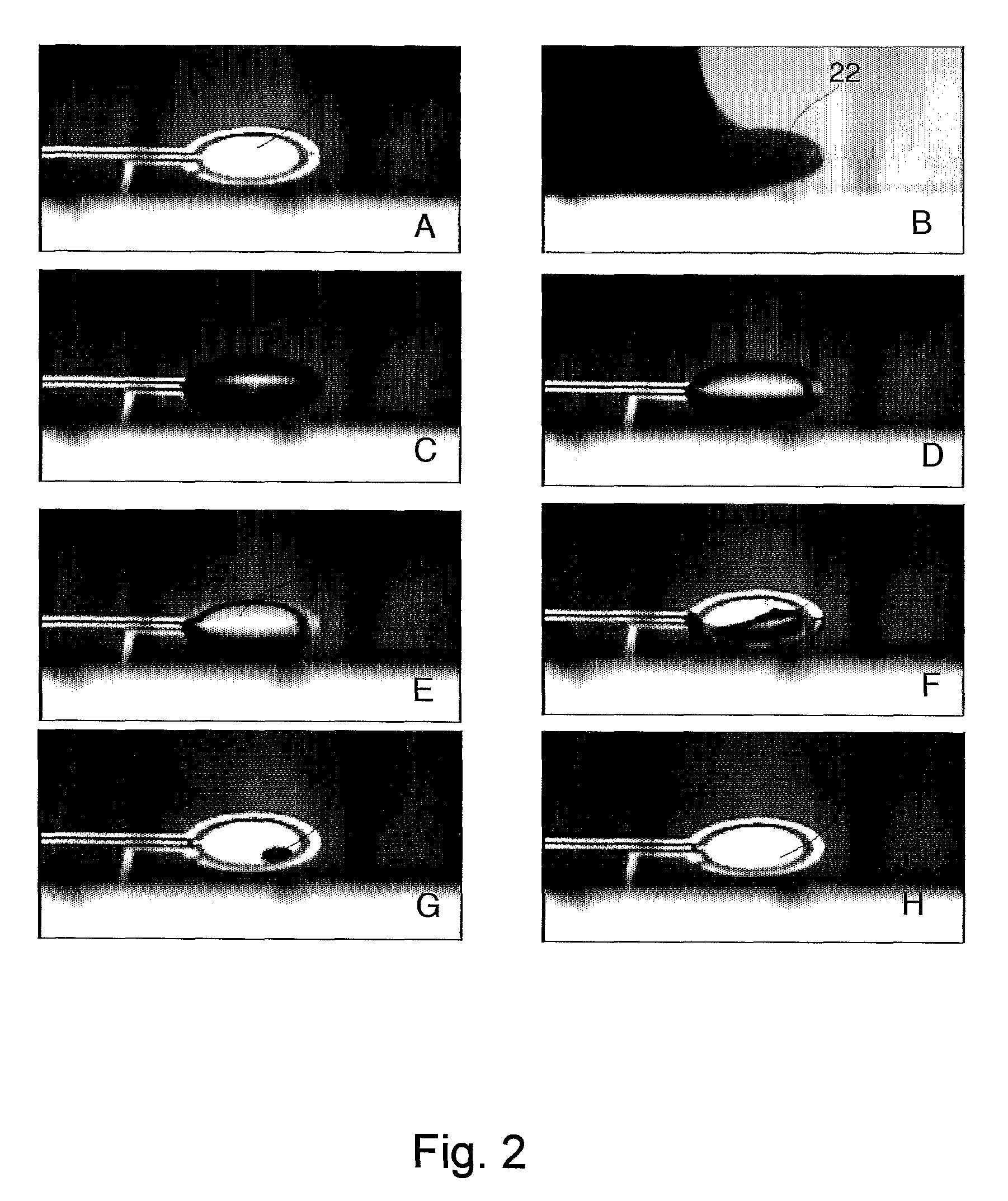Method of improving sensor detection of target molcules in a sample within a fluidic system
a fluidic system and sensor technology, applied in the field of microfluidics, can solve the problems of false positives, techniques have their own drawbacks, and tasks are made more difficul
- Summary
- Abstract
- Description
- Claims
- Application Information
AI Technical Summary
Benefits of technology
Problems solved by technology
Method used
Image
Examples
Embodiment Construction
[0015]The present invention solves these and related problems by circulating the entire sample over the sensing site not as a continuous stream, but rather as a series of discrete, moving droplets which can be exposed, agitated, or even concentrated through evaporation at the sensor in a repeated and well-defined and repeatable manner (timing of delivery and exposure, frequency of agitation, degree of evaporation, number of repeat passes, periodic washing, etc). Such a discrete series of moving droplets can be achieved by using a variety of mechanical, electronic, chemical, optical or other droplet handling methods. One example of such on-chip discrete droplet control is the microfluidic handling capability achieved via Electro-Wetting-On-Dielectric (EWOD) effects [see 1) J. Lee, H. Moon, J. Fowler, T. Schoelihammer and C.-J. Kim, “Electrowetting and Electrowetting-On-Dielectric for Microscale Liquid Handling”, Sensors and Actuators, Vol. A95, 2002, pp. 259-268 and 2) S.-K. Cho, H. ...
PUM
| Property | Measurement | Unit |
|---|---|---|
| speeds | aaaaa | aaaaa |
| speed | aaaaa | aaaaa |
| diameter | aaaaa | aaaaa |
Abstract
Description
Claims
Application Information
 Login to View More
Login to View More - R&D
- Intellectual Property
- Life Sciences
- Materials
- Tech Scout
- Unparalleled Data Quality
- Higher Quality Content
- 60% Fewer Hallucinations
Browse by: Latest US Patents, China's latest patents, Technical Efficacy Thesaurus, Application Domain, Technology Topic, Popular Technical Reports.
© 2025 PatSnap. All rights reserved.Legal|Privacy policy|Modern Slavery Act Transparency Statement|Sitemap|About US| Contact US: help@patsnap.com



